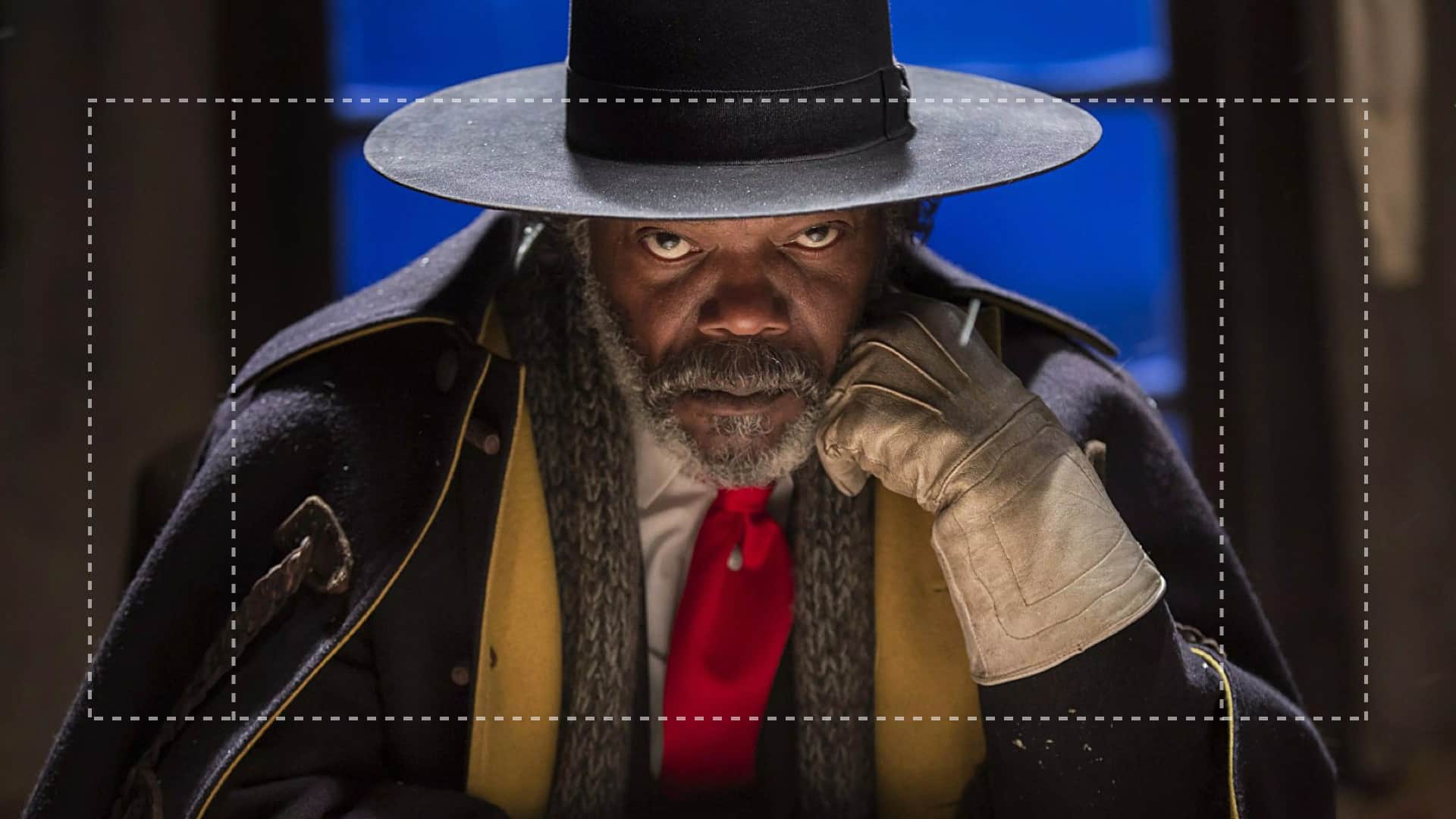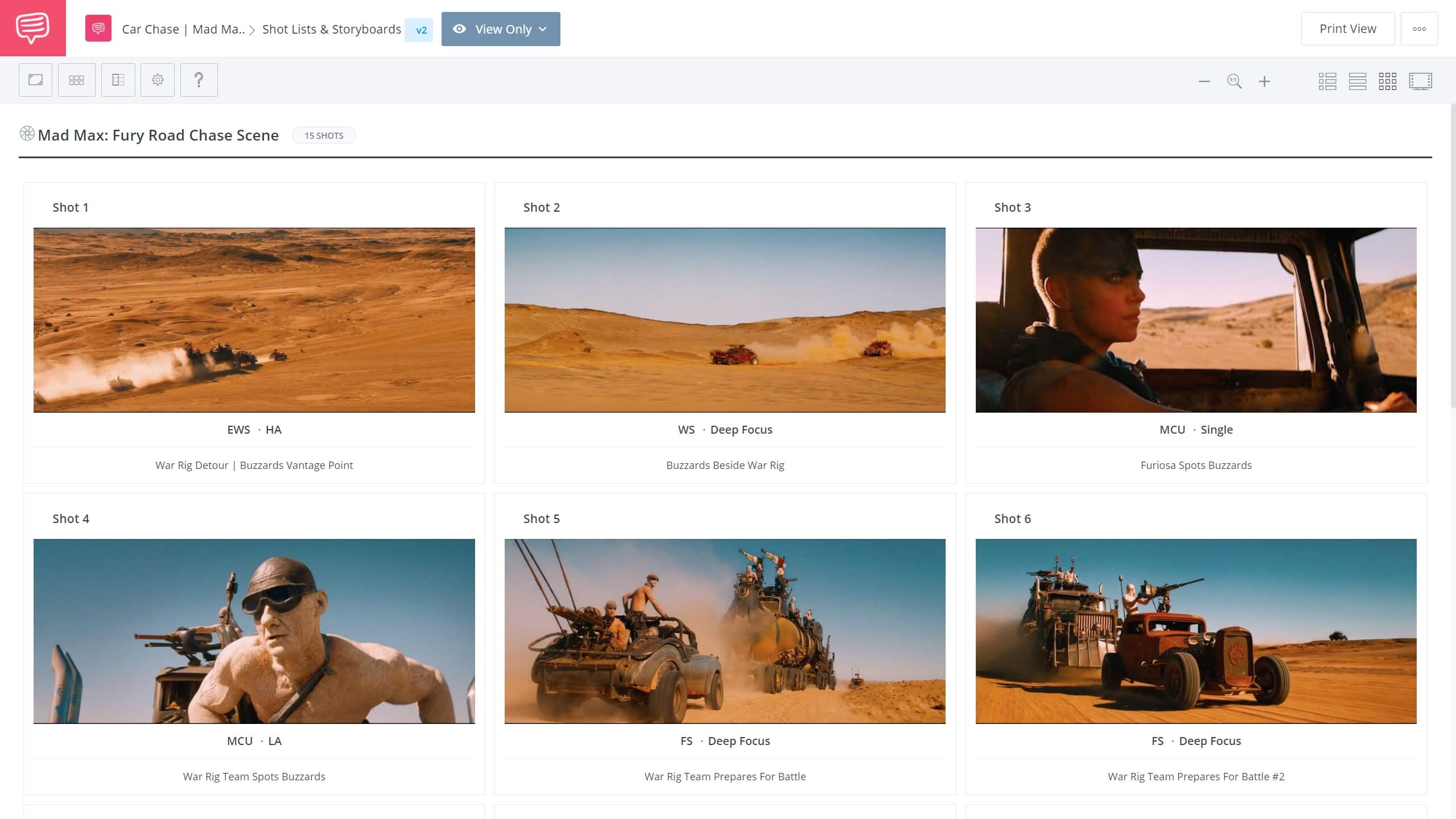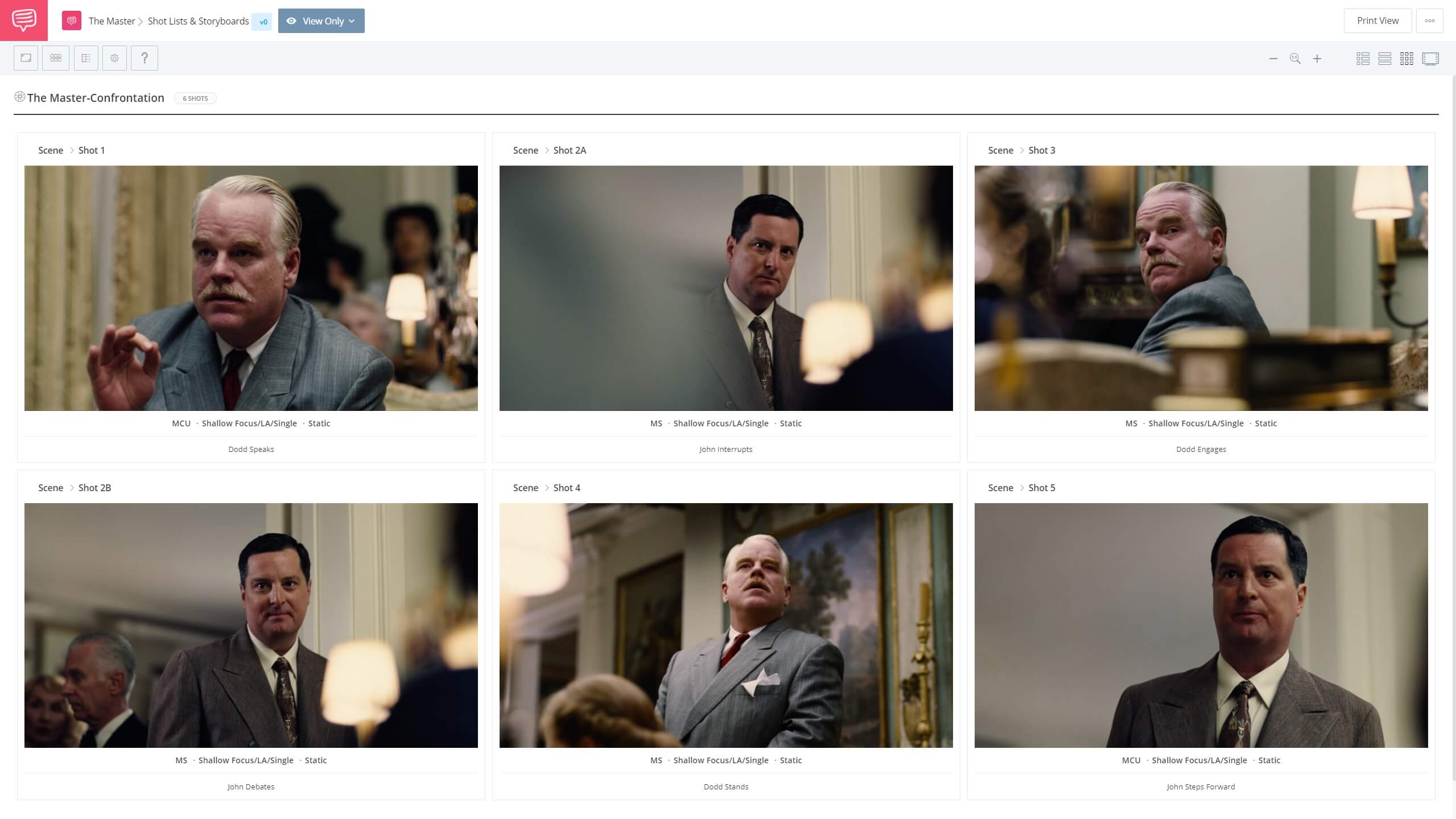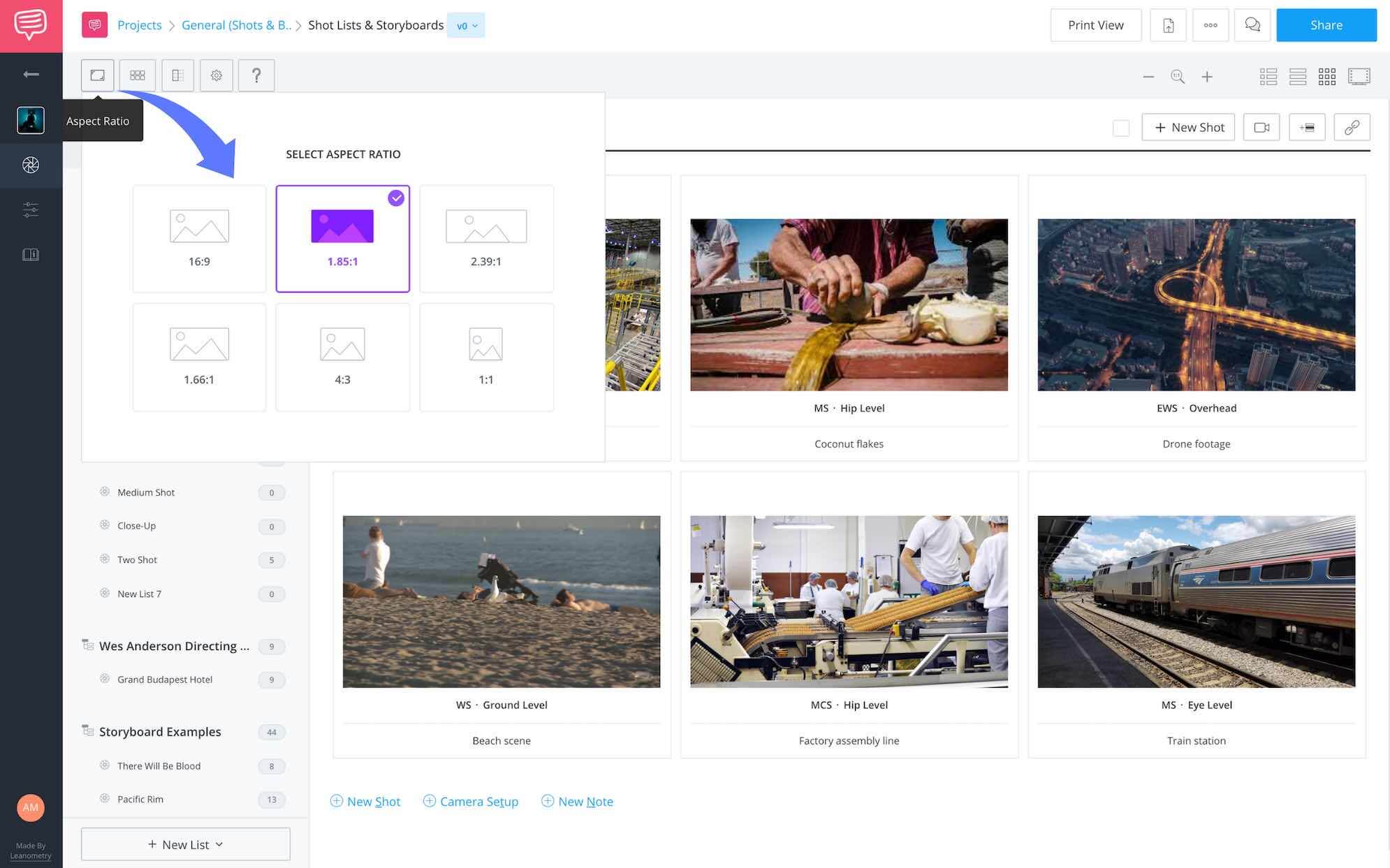If you’re an aspiring filmmaker, you’ve probably heard the term aspect ratio quite often. Before you shoot even a single frame of your film, you have to decide what aspect ratio would be best. This decision will affect the staging and framing of every single shot going forward. Why? What is aspect ratio, and why does it matter so much?
Let’s find out.
Aspect Ratio Meaning
What does aspect ratio mean
The shape of your image is dictated by its aspect ratio. In the early days, there was only one option while today there are many. Beyond that simple explanation, what's aspect ration got to do with storytelling? Does the a more square image tell a different story than a rectangular image? Understanding the power of aspect ratio has on your storytelling starts with basic math.
ASPECT RATIO DEFINITION
What is aspect ratio?
Aspect ratio is the ratio of width (w) to height (h) that describes the shape of your film, or image. It’s usually written as a ratio of (w):(h) like 1:1, 4:3 or 16:9. Aspect ratio has no relationship to how big or small the screen is — you can have a 4:3 image on a cellphone or on a 40' movie theater screen. The original standard aspect ratio for filmmaking (1.33:1) was chosen based on the industry's adoption of 35mm celluloid film as the primary format. Since then, a number of technological and creative advances have opened up many options when it comes to aspect ratio.
Common Aspect Ratio Examples:
- Early aspect ratios like 1.33:1 and 1.37:1 were the standard in Hollywood for decades
- Widescreen aspect ratios like 1.85:1 and 2.39:1 became more prominent starting in the 1950s
- Today's aspect ratios also include the vertical 9:16 for smartphones and applications like Instagram stories
Aspect Ratio CHOICES
Common aspect ratios
In film, it is critical to determine which aspect ratio you want to shoot in, depending on the context of the film, and what you want to show. Certain movie genres lend themselves to certain aspect ratios (e.g., Westerns highlight landscapes so a wider frame is better suited).
This image from The Tree of Life illustrates the boundaries for three of the most common aspect ratio examples.
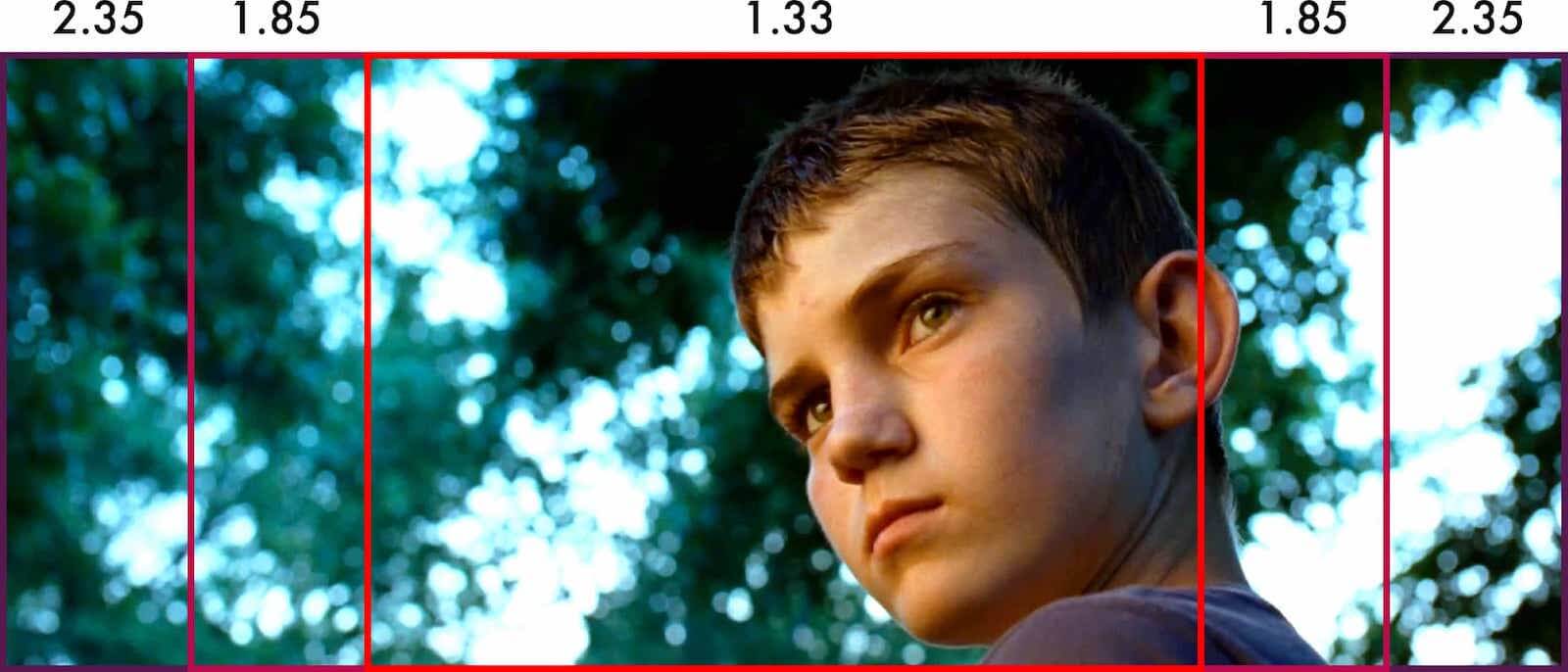
Figure out your framing with aspect ratios
We also want to be able to show our project across multiple platforms. But viewing our films in theatres vs. on a phone or laptop, demand knowledge of aspect ratio for proper conversion.
When you’re editing or resizing images, it’s essential to have an aspect ratio calculator, especially if you’re going from widescreen to full-screen aspect ratio. These calculators use an algorithm to make edits precise and help you to crop or expand images without it looking too stretched or shrunk.
2.76:1 Ultra Panavision
Popularized in the 1950s when widescreen presentation was all the rage. It hadn't been used for decades until recently when Tarantino brought it back for The Hateful Eight.
2.35:1 Anamorphic Widescreen
This ratio is helpful when the landscape or story world is a major player in the story itself. Even close-ups allow us to see the full landscape. Star Wars often uses this. We want to see everything, all the time.
2:1 Univisium
Vittorio Storaro, legendary DP on films like Apocalypse Now and The Conformist developed a 2:1 aspect ratio he dubbed "Univisium." It is meant to give filmmakers happy medium between the widescreen theatrical size and what most TV sets are designed to show. Here's a quick look at the 2:1 aspect ratio and how it bridges that gap.
What is 2:1 Aspect Ratio? • Subscribe on YouTube
1.85:1 Standard Widescreen
Helpful when we’re framing taller buildings than the previous ratio. This one is a bit more versatile. Because of its tighter focus, a close-up fills more of the frame, and the moment becomes more intimate.
16:9 Standard Video/Television
Computer monitors and televisions began to take on different shapes in the last few years. They morphed from a boxy 4:3 to a wider ratio to accommodate widescreen content.
1.43:1 IMAX
If you've been to an IMAX movie, you've seen the screen is much taller than a standard multiplex. This is because of the 65mm film used for these productions to capture the largest image possible.
1.33:1 Full Screen
This ratio was used for decades before the advent of widescreen formats. Any classic, black and white movie or vintage television programs used this more "full screen" shape.
9:16 Vertical Video
The most recent evolution of popular aspect ratios has everything to do with our phones and the tendency to film in vertically instead of horizontally. Social media has embraced this and 9:16 has become the standard for content on Facebook, Instagram and Snapchat.
COMPARING Aspect RatioS
Use aspect ratio for tone/genre
As we've discussed, certain aspect ratios lend themselves to certain genres or moods. Wider frames are better equipped to capture landscapes and action, while taller frames can show more of a character's performance.
Let's look at two examples using a StudioBinder shot list. In Mad Max: Fury Road, the film is anchored by massive car chases across the desert. Keeping the scene geography intact in such chaos depends on the amount of information we can squeeze into the frame horizontally.
This is why the wider 2.39:1 aspect ratio becomes almost necessary to tell this particular story. It would be much more difficult to absorb all of this post-apocalyptic insanity otherwise.
A wider frame captures more horizontal action • See Full Shot List
In our second example, Paul Thomas Anderson chose a slightly taller 1.85:1 ratio for his film The Master. If you've seen it, you know that the performances are astounding. The image dimensions help capture not just the face but the entire physical performance. Consider this scene when emotions run high.
Imposing figures captured vertically • See Full Shot List
In StudioBinder, you can adjust your storyboards to whichever aspect ratio you've chosen for your project. Once you've populated your shot list, the icon in the upper left corner gives you various options, including everything from 1:1 to the 2.39:1 aspect ratio.
We hope this brief overview has answered the fundamental question: what is aspect ratio? Remember, this is not an arbitrary decision for your project. The size and dimension of your image has a direct impact on how it is received by the audience. Whether you're making a short film, a music video, or even a commercial, understanding the benefits of aspect ratio will elevate the story.
RELATED POSTS
Up Next
What is a storyboard?
Now that you’ve picked the right aspect ratio for your shots, how will you plan them? You can use storyboards to execute on your vision. The next post explores the purpose of a storyboard with a brief step-by-step guide on how to use one.
Up Next: What's a storyboard? →
Showcase your vision with elegant shot lists and storyboards.
Create robust and customizable shot lists. Upload images to make storyboards and slideshows.
